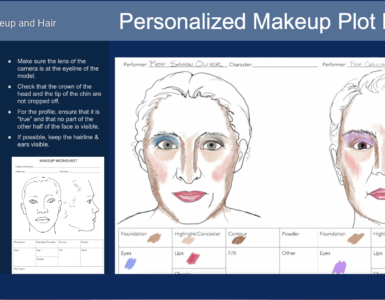by Marlene Wagner, University for Continuing Education Krems, Austria.
In today’s ever-evolving educational landscape, the convergence of physical and digital classrooms has given rise to the synchronous hybrid classroom. Imagine a space where on-site and remote students simultaneously participate in the same lesson, each from their unique vantage point. This innovative approach offers a glimpse into the future of education, yet it also poses questions about students’ engagement, social presence, and learning outcomes.
In my recent research, we conducted a survey with more than two hundred Austrian vocational high school students who participate in a synchronous hybrid classroom on a regular basis. Specifically, we wanted to investigate differences between on-site and remote students’ perceptions about the usability, social presence and the perceived impact that the synchronous hybrid classroom had on their engagement and learning.
Usability Challenges
One of the key findings of this study centered around the concept of usability. On-site students, it appeared, found the technology and interface more user-friendly than their remote counterparts. This disparity underscores the pressing need for more intuitive, accessible online platforms, ensuring a seamless learning experience for every student.
Social Presence
Another crucial aspect explored was students’ sense of social presence – the feeling of being part of a community even in the digital realm. Unsurprisingly, on-site students reported a stronger sense of social presence, fostering a richer learning experience. This element, also crucial for student engagement and learning, highlighted an area that begs for improvement in the synchronous hybrid classroom.
Perceived Impact on Engagement and Learning
While we found no large differences in terms of the perceived impact on engagement, the study revealed a substantial gap in perceived learning between on-site and remote students, raising questions about the equity of educational experiences. This disparity emphasises the critical need to bridge the learning divide, ensuring that both groups receive comparable educational benefits.
The Path Forward: Enhancing the Hybrid Learning Experience
To address these disparities, a multi-faceted approach is essential. First and foremost, there is a need to enhance the usability of digital platforms. Streamlining interfaces and ensuring user-friendly technology can alleviate challenges faced by remote learners, creating a level playing field for all. Additionally, nurturing social presence in the digital realm is imperative.
Educators must employ innovative techniques to create a sense of belonging among remote and on-site learners, building a supportive learning community. Students’ sense of social presence can be enhanced, for example, by mixing on-site and remote students during group work, by employing online quizzes and polls, and by paying particular attention to remote students.
Empowering Educators: The Key to Success
While technology plays a pivotal role, effective teaching practices are crucial. Teacher training programs must adapt to the demands of synchronous hybrid classrooms, equipping educators with the skills to facilitate engaging, interactive lessons across both physical and digital spaces. The empowerment of teachers, combined with user-friendly technology, forms the cornerstone of an equitable hybrid learning experience.
In conclusion, the synchronous hybrid classroom represents a transformative shift in education. By addressing the usability gap and enhancing social presence, a more inclusive learning environment can be created. Equally important is the empowerment of educators, equipping them with the skills to navigate this evolving landscape. The aim is to create an environment where every student, regardless of their physical location, receives a high-quality learning experience.
To explore the complete research findings, access the full paper here.

Author
Dr. Marlene Wagner, Senior Scientist at the Center for Digitalisation in Lifelong Learning, University for Continuing Education Krems, Austria














